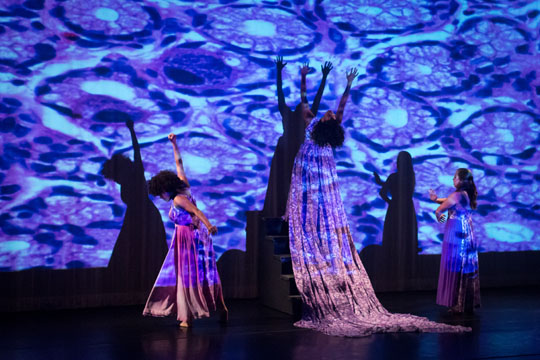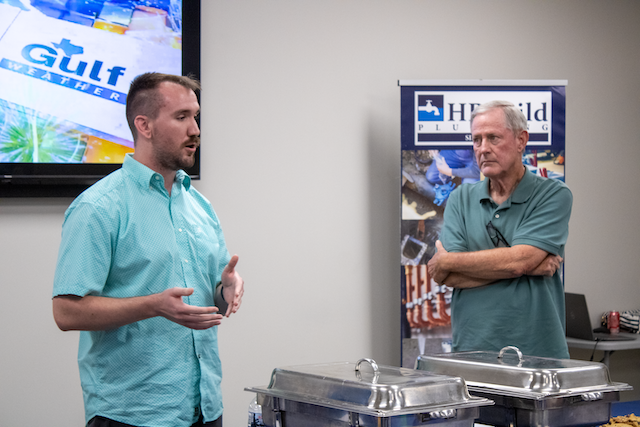Small life on big stage: Lamar professor uses microbial diseases in dress and dance
Published 8:57 pm Monday, October 1, 2018

- Lamar students perform in Cherie Acosta’s “Beautiful Affliction” performance. (Lynn Lane/Courtesy photo)
By Lorenzo Salinas
Art is inspired by many things in life, including those too small to see with the naked eye.
Cherie Acosta of Lamar’s Department of Theatre and Dance helped bring the microscopic world of cellular diseases to vivid display through a combination of dress and dance.
The assistant professor of costume design unveiled her exhibit “Beautiful Affliction” at the John P. McGovern Museum of Health and Medical Science in Houston last month. It is one part science, one part art and, overall, a creative approach to how these two seemingly disparate fields meet.
“I’ve been particularly interested in how art and medicine come together,” Acosta said. “Combing the arts and the sciences has been a kind of passion for me.”
The exhibit piece is a culmination of design, dance and visual art. Acosta said the inspiration came from a medical book.
“At the time I was working with a choreographer, Travis Prokop, at Lamar and I came across some photographs in a book — ‘Hidden Beauty: Exploring the Aesthetics of Medical Science’ — and I was just really struck by how beautiful these diseases were and the irony of how destructive they were,” she said.
“I myself have suffered from chronic illness, and I’ve been fascinated by how diseases work in the body.”
Acosta contacted one of the authors of the book, a doctor at Johns Hopkins, to get permission to use the photographs. From there, Acosta took the photos of the cellular diseases and printed them onto fabrics to achieve what she dubbed certain “Grecian ideals of beauty” in the final product.

Cherie Acosta’s cellular-inspired dresses are showcased as part of the “Beautiful Affliction” exhibit at the John P. McGovern Museum of Health and Medical Science in Houston. (Special to The News)
During this time, she also worked with the choreographer to bring her vision to balletic life.
“We talked about creating a dance piece, wearing these gowns and exploring the ideas of what it means to take on an illness, to live with it and to wear it,” Acosta said.
She indicated that dance and theater were unique art forms to realize something as strangely intimate as cellular diseases.
“First of all, we don’t have a lot of control over the human body. What connects us to each other is that we’re all subject to the same, difficult human condition,” Acosta said.
“When I saw the photographs, the (microorganisms) were pretty flat, but cells are always changing and always moving. So, I thought dance would mimic what’s happening in the human body.”
For Acosta, dance, dresses and photography would bring an immediacy to an issue she said most people weren’t even aware of.
“Unless you’re suffering from an illness, you don’t think about it or recognize it,” she said. “So, bringing these diseases out is the first step to addressing something that’s unseen by most people. It’s a way of bringing out what’s happening inside of the human body.”
Acosta said her next project would also encompass how medicine and art intersect with each other.
“We’re big consumers of visual arts, but when it comes to live performances people have started to view them less and less,” she said. “Really, the most amazing thing about dance and theater is that that performance will never be done again.”
“Beautiful Affliction” has toured in the American University of Paris and is currently in the Museum of Health and Medical Science in Houston. It will be on display from Aug. 19 to Jan. 11.
“It’s been really exciting and, of course, a reward to have your work enjoyed by so many people,” Acosta said. “More than anything, seeing the concept come together and reach fruition to the final product is the most exciting part. Watching our students perform (it) was probably the most satisfying thing to me.”





